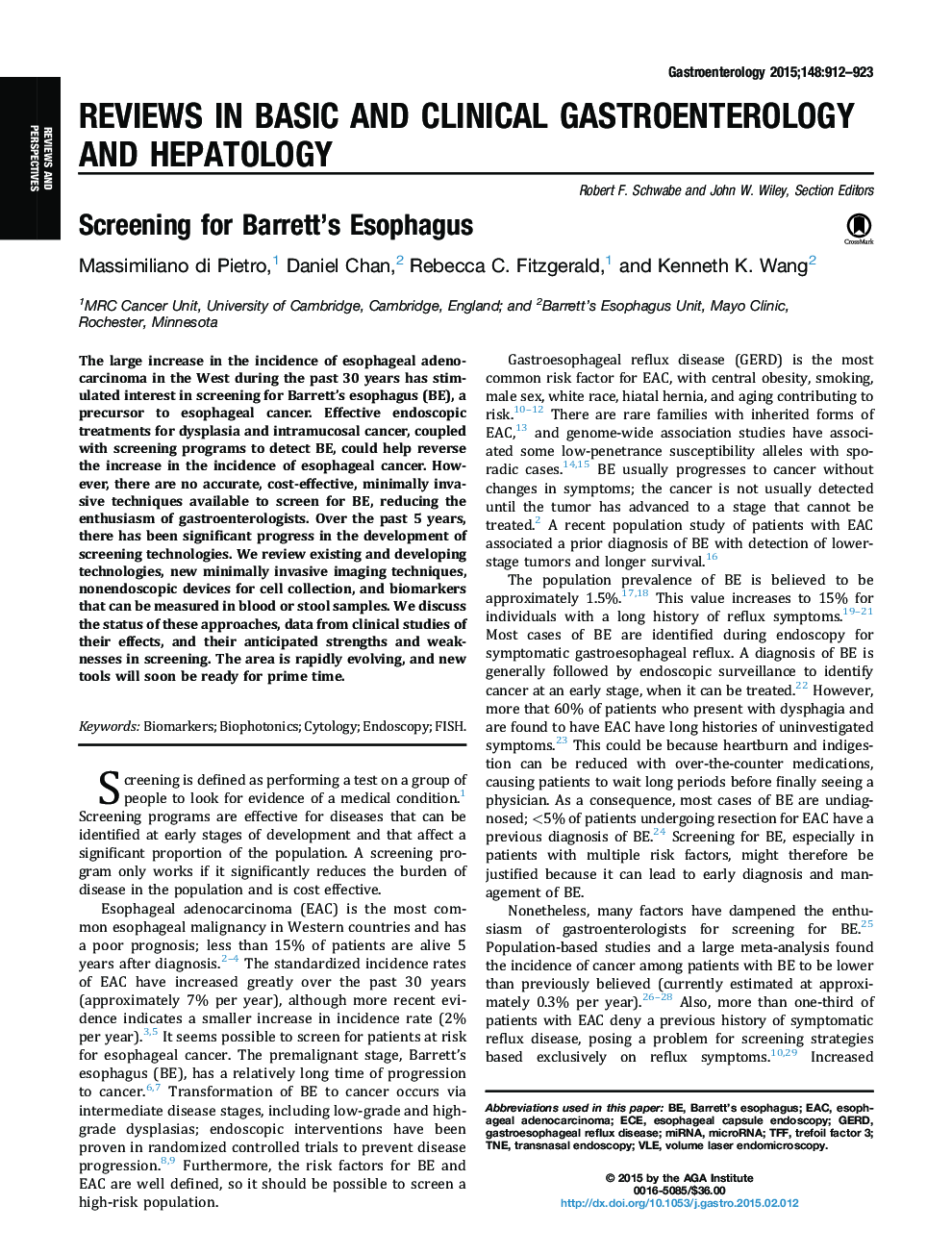| Article ID | Journal | Published Year | Pages | File Type |
|---|---|---|---|---|
| 3292592 | Gastroenterology | 2015 | 12 Pages |
The large increase in the incidence of esophageal adenocarcinoma in the West during the past 30 years has stimulated interest in screening for Barrett’s esophagus (BE), a precursor to esophageal cancer. Effective endoscopic treatments for dysplasia and intramucosal cancer, coupled with screening programs to detect BE, could help reverse the increase in the incidence of esophageal cancer. However, there are no accurate, cost-effective, minimally invasive techniques available to screen for BE, reducing the enthusiasm of gastroenterologists. Over the past 5 years, there has been significant progress in the development of screening technologies. We review existing and developing technologies, new minimally invasive imaging techniques, nonendoscopic devices for cell collection, and biomarkers that can be measured in blood or stool samples. We discuss the status of these approaches, data from clinical studies of their effects, and their anticipated strengths and weaknesses in screening. The area is rapidly evolving, and new tools will soon be ready for prime time.
